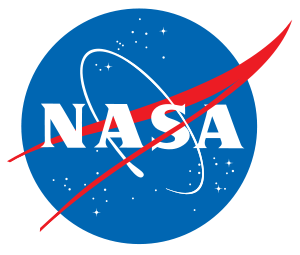NASA talked about the new Mars rover and other research plans for Mars
- Transfer

From a translator: Unfortunately, despite the obvious and significant achievements in the field of planetary research, many countries continue to reduce funding for this area of science. There was no exception and NASA, whose budget will be cut as early as next year. However, NASA has rather ambitious plans for further exploration of Mars, which include, among other things, the development of a new rover.
Continuing efforts to reorganize the Mars exploration program, which became necessary after a budget cut was announced this year, NASA announced plans to send a new rover to the Red Planet, based on Curiosity and worth $ 1.5 billion, in 2020.
This, as yet unnamed, rover is the second of the new Martian missions, which, due to budget cuts, will use existing developments, which more or less corresponds to the realities of financing at the moment.
“In the form of the Mars Exploration Program, we were challenged. What started with seven minutes of horror at Curiosity landing will be the starting point for seven years of innovation, ”said NASA supervisor John Grunsfeld.
Here he refers to the "sky crane" - the innovative Curiosity rocket landing system - which successfully landed a nuclear powered rover on the surface of the Red Planet on August 6.
“The concept of this mission fits well with both the current and planned budget for the exploration of Mars; it is based on Curiosity developments and uses a good opportunity to launch [apparently it means that in 2020 the mutual position of the Earth and Mars will facilitate the launch, - approx.] , ”said Gransfeld. “We are going to use our old team to build a new rover by 2020. All this will allow us to fulfill the plan, keeping within the current budget. ”
The 2013 Obama administration’s budget provides for a 20 percent reduction in NASA planetary research costs, with most of it coming from the Martian program. Over the next years, further budget cuts are expected.
As a result, NASA had to abandon the two planned Martian missions, which were to be carried out jointly with the European Space Agency in 2016 and 2018. At that time, there were no significant planetary missions like Curiosity in development.
Amid criticism from some academics, NASA began to work out alternative approaches and scenarios.
In August, just two weeks after Curiosity landed, NASA announced it would launch a relatively cheap lander in 2016. He will have to land on Mars using rocket traction, and his main task will be to answer the question of whether the planet’s core is solid, and also to find out if there are tectonic plates on Mars that move like Earth.
This device, called InSight - Interior Exploration Using Seismic Investigations, Geodesy and Heat Transport - will be based on the design of the successful Phoenix probe, a solar-powered descent vehicle that landed near the northern polar planet of the Red Planet in May 2008.

InSight (artist's drawing)
InSight will be equipped with a robotic “arm”, two black-and-white cameras, and geodesic instruments from the Jet Propulsion Laboratory, which will have to measure the position of the axis of rotation of the planet. As the so-called "Discovery Class Mission", the project cost is limited to 425 million dollars excluding the launch vehicle.
The cost of the new rover, which was announced on Tuesday, will be (taking into account the launch vehicle), according to preliminary estimates, about $ 1.5 billion, plus or minus 200 million.
Curiosity cost a total of 2.5 billion, and its development lasted about 10 years. However, the new rover will not have to reinvent new systems and develop technologies, which will allow NASA to better control costs.
Greensfeld also noted that the Martian program will allow NASA to remain a leader in planetary research.
Along with the currently operating devices - the Mars rovers Curiosity and Opportunity, two operating artificial satellites of Mars, and modules aboard the satellite of the European Space Agency - a revised research program for Mars includes:
- MAVEN satellite - The Mars Atmosphere and Volative Evolution - which is scheduled to be launched in 2013
- communication equipment for the mission of the European Space Agency Trace Gas Explirer in 2016 and astrobiological equipment for the rover of the European Space Agency in 2018.
- 2018 InSight mission
- new rover, the launch of which is scheduled for 2020.
“We have a lot of budget problems,” Gransfeld told reporters, “We are still working on the budget for 2013. Plus, the Administration is considering our proposals for the 2014 budget. ”
Congressman Adam Schiff also stated that “an improved Mars rover with additional tools and advanced features is the logical next step, based on proven landing systems.”
However, he would like to move the launch date to 2018.
“Despite the fact that 2020 would be successful in terms of the location of Mars and the Earth, launching in 2018 would be an even better option. This would send even more payload to Mars. "Together with NASA, the White House and my colleagues in Congress, we will work on this and decide whether a launch date change will be possible."
Greensfeld, however, warned that “2020 is already quite ambitious, and we will have to do a lot of work. The launch is possible by 2018, but it will not be easy. Perhaps because of this, it will be necessary to exclude from the program some studies that would be possible if we had two more years left. In a way, this will be a step back. ”
